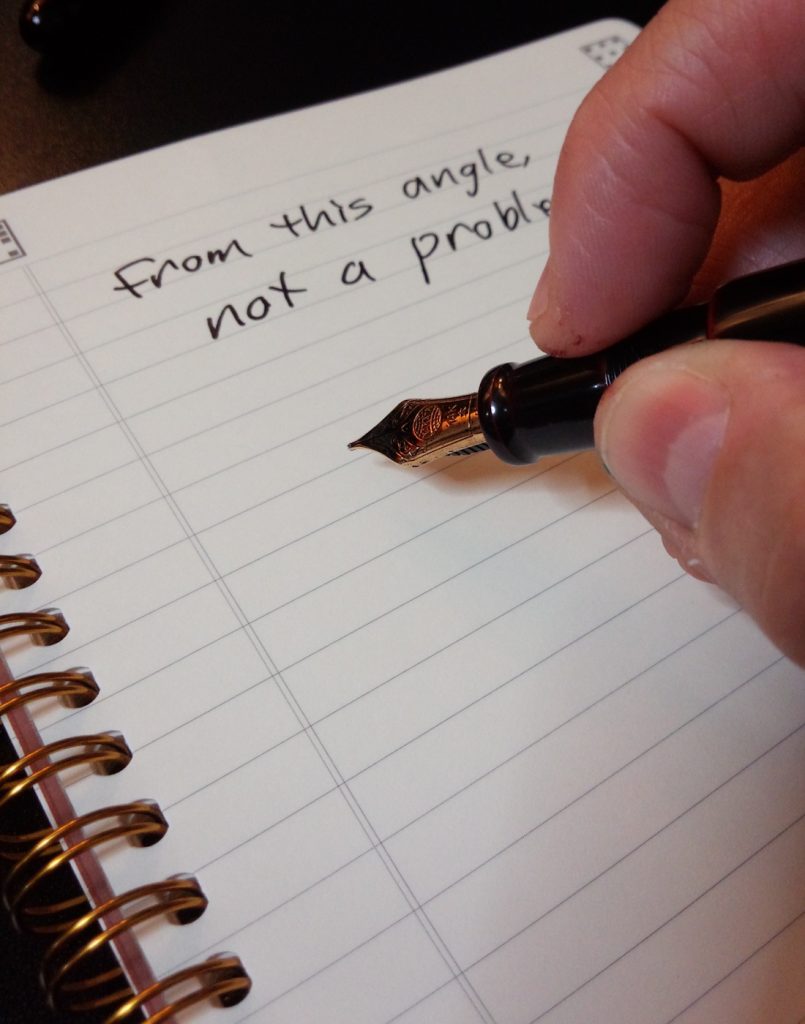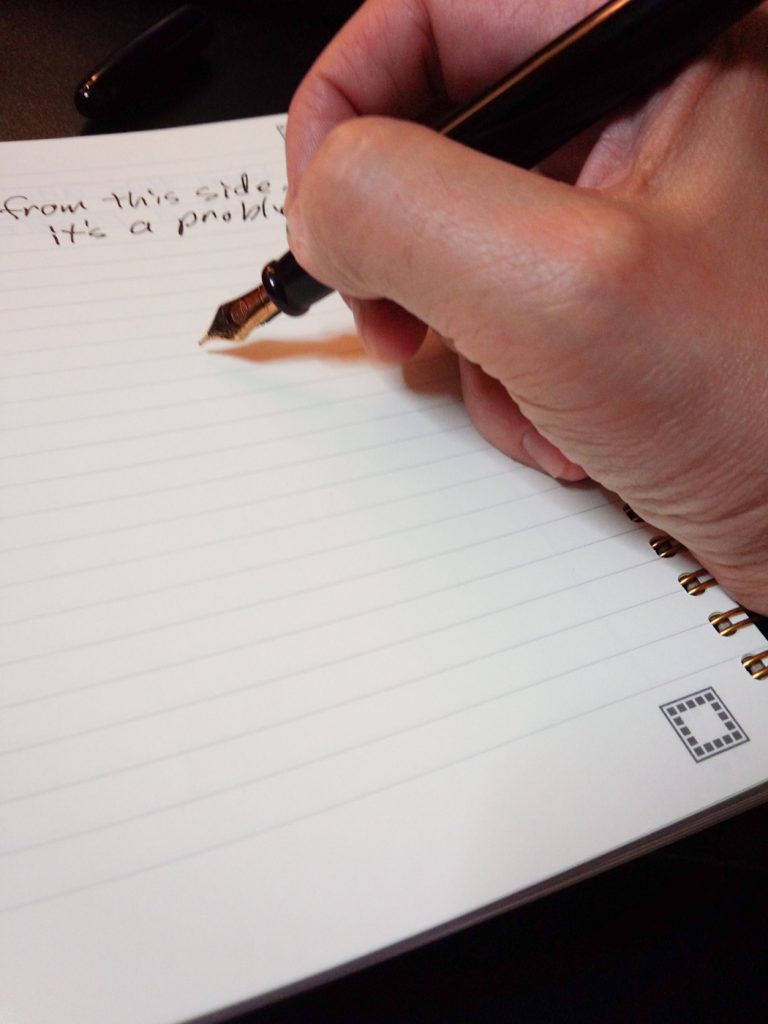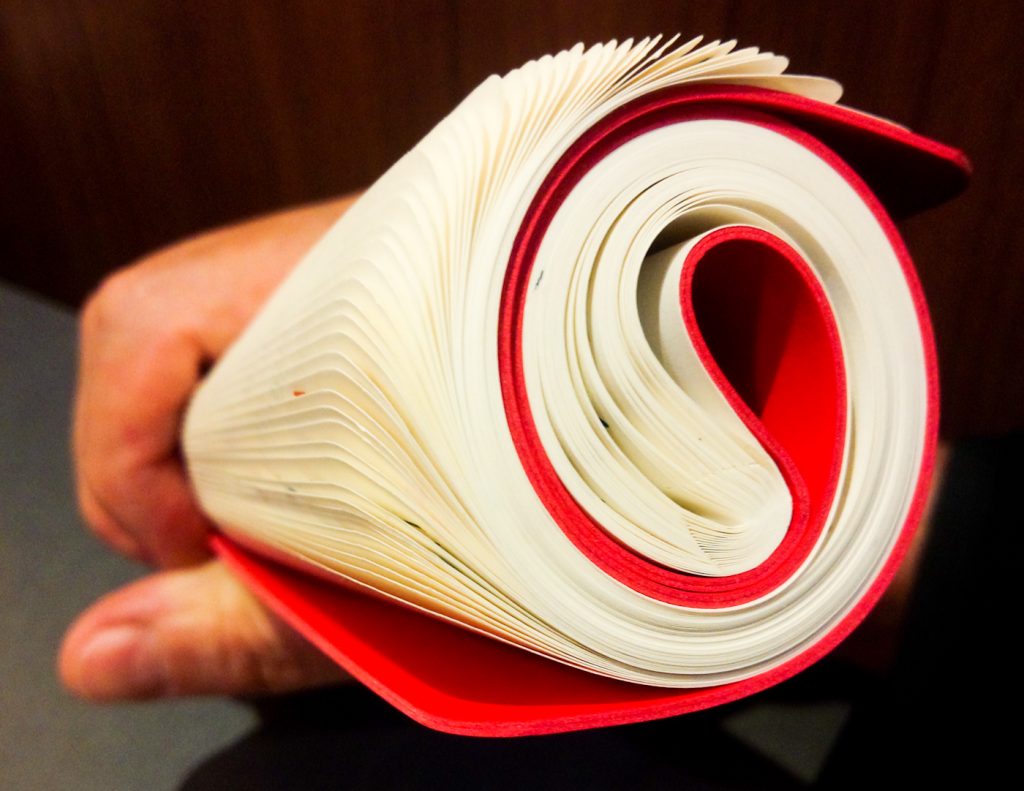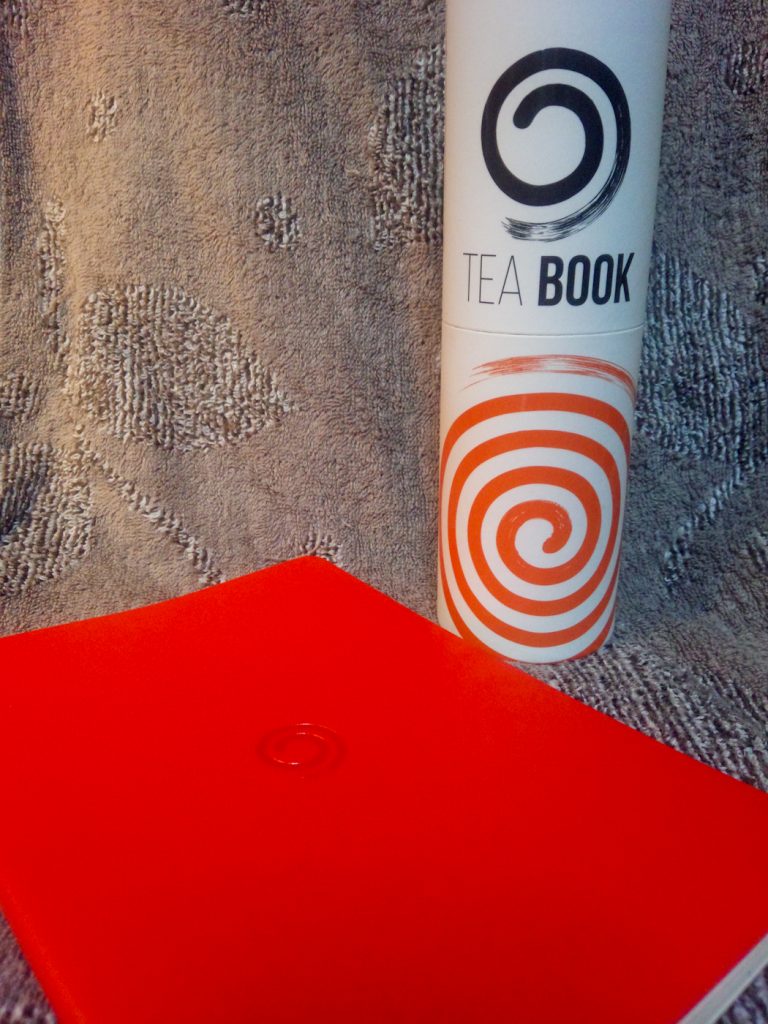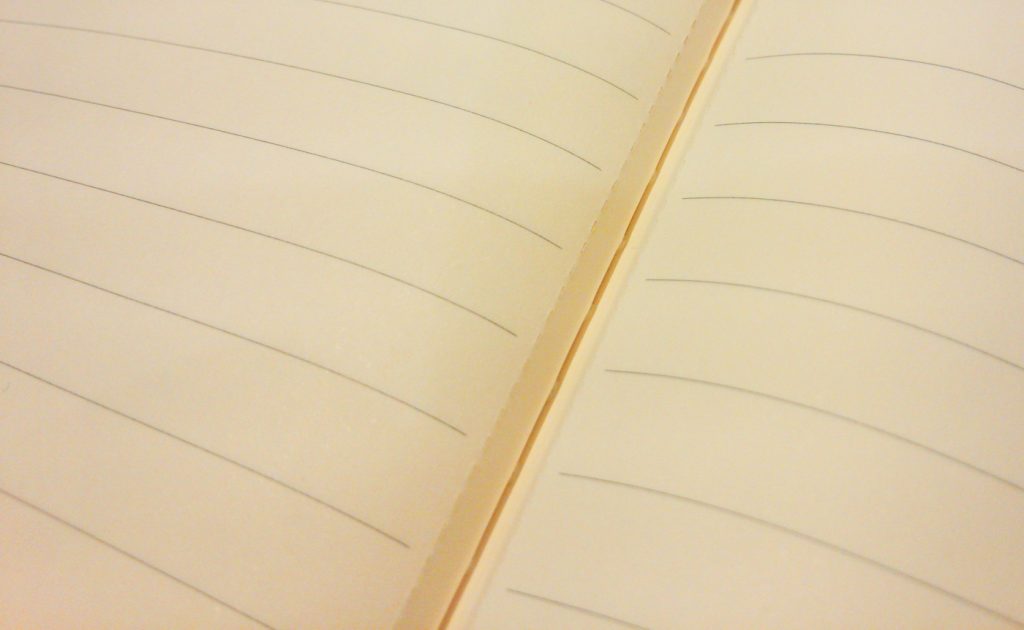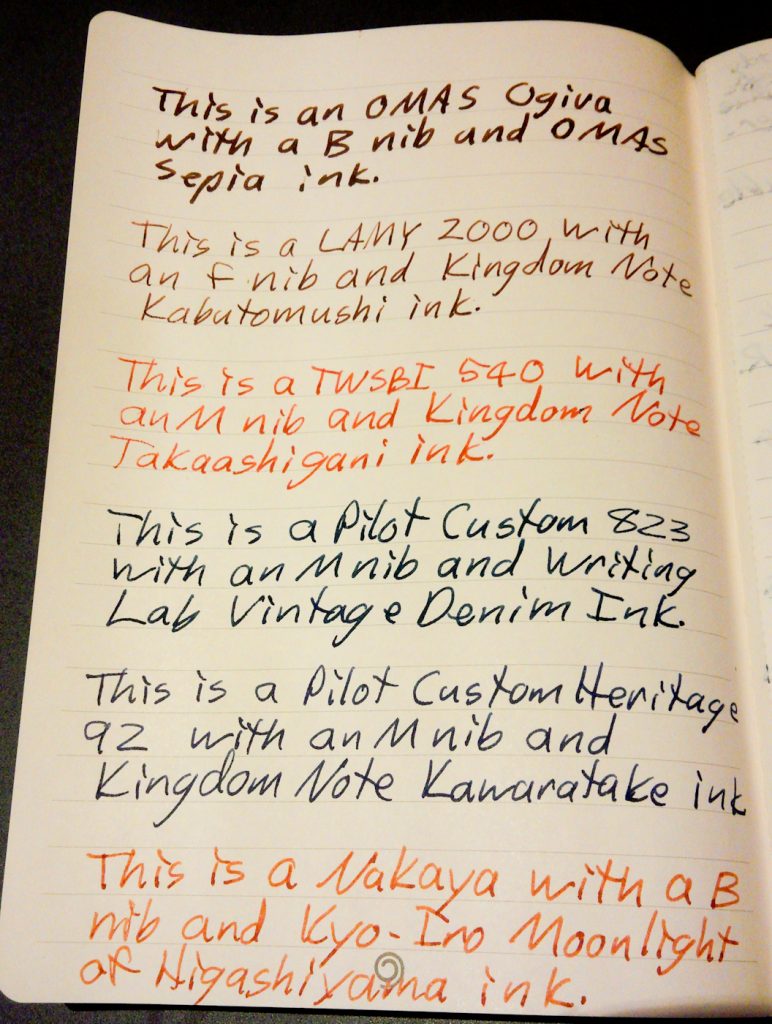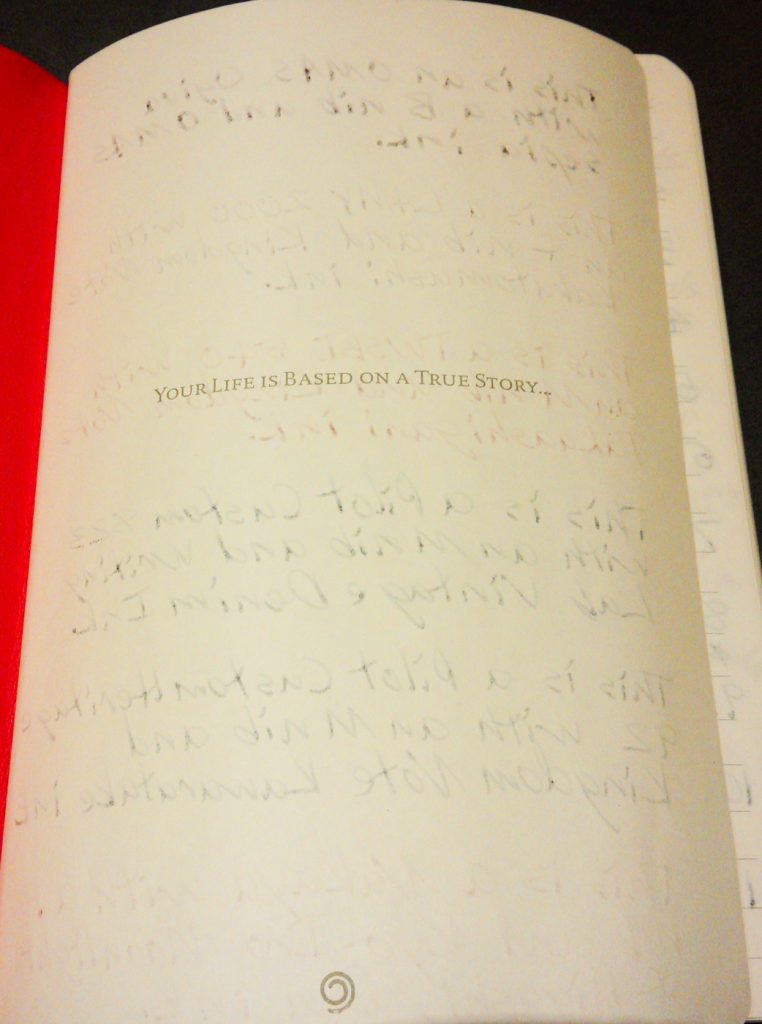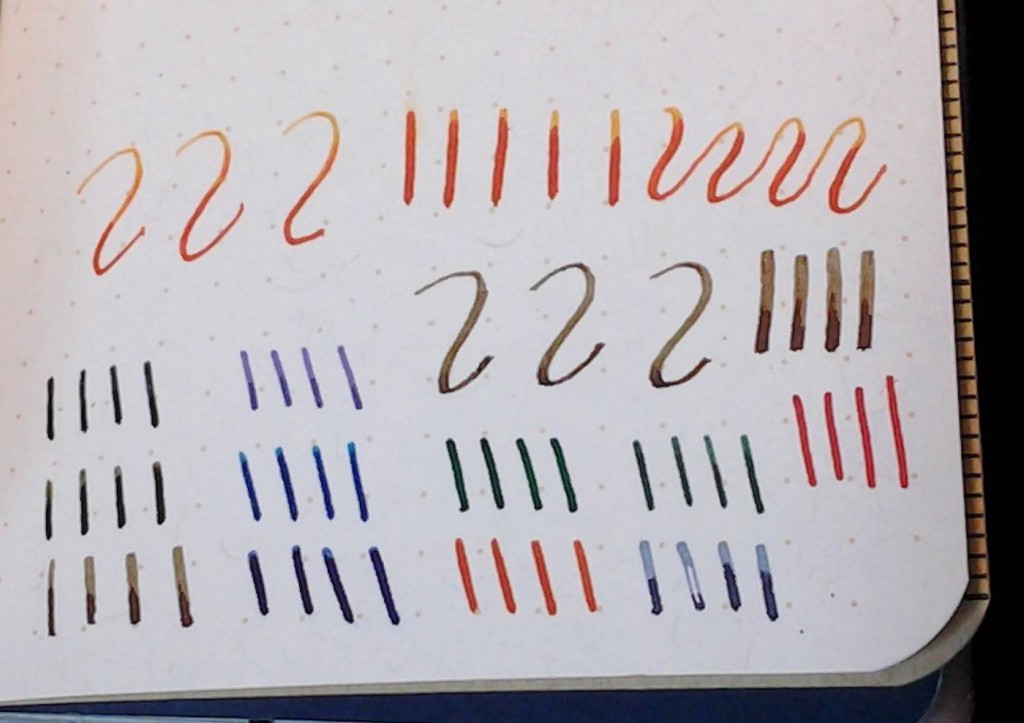After using them for a large portion of my education, I finally reached the conclusion that I hate spiral bound notebooks in all their various forms.
I only bring this up because at last year’s ISOT I was given a spiral notebook as a free sample from a Korean notebook manufacturer. I frowned inside at it, and since I have no poker face whatsoever that means I frowned outside at it too, but I accepted it because it was free and I was interested in the smartphone app that accompanied it. (As used notebooks pile up around me in the variety room/office, digitizing my scrawls and scraps has become increasingly important to me.) I put off testing it but feel that since it was given for evaluation it’s only fair that I evaluate it.
I’ll get to that review in another post. Today, though, I want to trash the binding. As I’ve used the notebook, I’ve begun to remember the reasons I stopped using spiral bound notebooks. (Note: I count anything bound with continuous metal rings as “spiral bound”.)
–The binding is thicker than the notebook which means the binding inevitably gets mashed and mangled if it’s carried in a bag.
–The binding is thicker than the notebook making them impossible to stack.
–If you do stack them, they wire binding gets stuck together.
–They only work well on one side but your hand rests on the binding when you’re using the other side which makes them uncomfortable to use.
–When you tear pages out you get the fuzzy bits that seem to get all over everything.
–When you tear pages out there’s always a piece of fuzzy bit that gets stuck in the binding.
I remember professors insisting that we cut off the fuzzy bits before we turned in assignments. The fuzzy bits were only slightly less hated than the dreaded slippery plastic cover.
I’m more forgiving of top-bound notebooks like the Nock Co. DotDash Spiral Pad or the Field Notes Byline, especially as the Byline attempts to protect the binding, but they are still problematic.
I dug through some old writing journals and found an old spiral notebook I saved for some reason, probably the contents (more on those in a future post). The spiral is getting grungy and probably about to rust.
It may be time to digitize the contents and rid myself of the last remnants of spiral bound in the house. Well, at least once I finish the review of the one I got from Korea.

